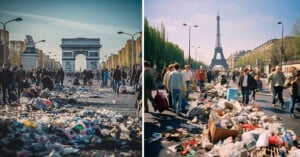
Fake AI Images of Paris Covered in Trash Go Viral
Images generated by artificial intelligence (AI) have the power to deceive and that's exactly what happened recently when a series of "photos" pertaining to show Paris covered in trash went viral.

Images generated by artificial intelligence (AI) have the power to deceive and that's exactly what happened recently when a series of "photos" pertaining to show Paris covered in trash went viral.
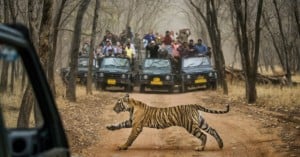
Celebrating Earth Day – and its 50th anniversary – against the backdrop of COVID-19 is something we’ll likely remember for quite some time.
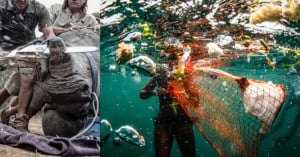
Last week, The Chartered Institution of Water and Environmental Management (CIWEM) revealed the winners of this year's Environmental Photographer of the Year awards, highlighting images that turn an unblinking eye on man's impact on the environment in ways both subtle and direct.
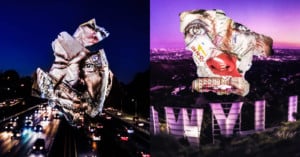
Photographer Philippe Echaroux wants to spread an important message about the problem of trash littered on streets. His new photo project After the Dream is a creative series designed to raise awareness about this issue.
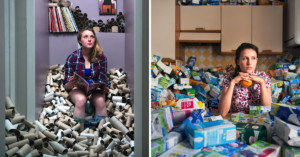
Photographer Antoine Repessé has a new photo series titled "#365 Unpacked" that required some rather unusual preparation: he spent 4 years gathering trash to create the garbage-filled sets.
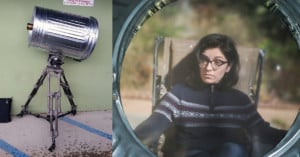
I recently built a Trash Cam out of a trash can, large format lens, and Sony a7S II. The project was an attempt to find an inexpensive housing for a large format lens.
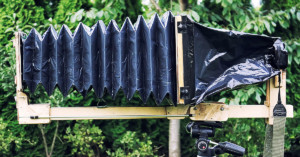
I recently built my own DIY large format camera using scraps. The idea of this camera started with vintage profile spotlight that I wanted to restore, only to discover that some of the internal lens elements were shattered. The only lens element that was undamaged was the front element. Upon closer inspection, I discovered that this element can project an image circle big enough to cover an 8x10 area.
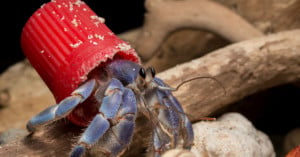
Crabs with Beach Trash Homes is a series I am currently working on. I photograph Blueberry hermit crabs (Coenobita purpureus) on local beaches in Okinawa, Japan, that have begun to use beach trash as their shell.
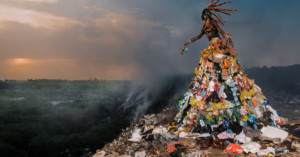
"The Prophesy" is a striking series of photographs by photographer Fabrice Monteiro that shines light on the problem of pollution in Africa, yet offers a message of hope. Each image is a "high fashion photo" in which the garment is crafted from things found at locations that have been altered by trash.
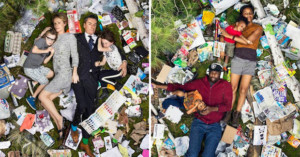
Photographer Gregg Segal wanted to put a human face on the trash problem in the US. Cold numbers and statistics can only have so much of an impact, pictures of real families and individuals lying in 7 days-worth of their own trash... now that would get some attention.
Thus was born the 7 Days of Garbage series, a set of photographs featuring people from varied socioeconomic backgrounds literally wallowing in a week's worth of their waste.
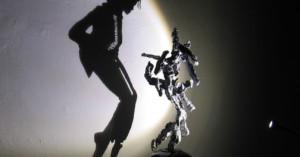
Voted "The Most Brilliant Artist of the Netherlands" in 2009, Dutch artist Diet Wiegman is a master of his craft. But of all the amazing creations he has to his name, his work with light and shadow is most breathtaking. Using garbage, pieces of glass and other rubble, he creates a sculpture that, with the help of a light source, projects a beautiful image onto a wall.
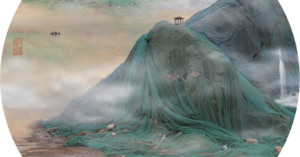
Take a quick look at Chinese photographer Yao Lu's "New Landscapes" photos, and they may look to you like old Chinese paintings of misty mountains, green hills, and choppy brown rivers. Each one even bears a red seal stamp that artists use as signatures on finished works.
Look a little closer, however, and it becomes apparent that something isn't quite right. "Those are some strange looking mountains, you think to yourself." Well, they aren't actually mountains, but rather mounds of garbage covered with green construction netting.
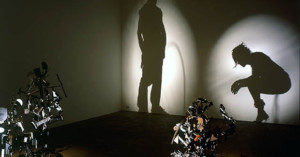
Tim Noble and Sue Webster are a London-based artist duo that creates amazing shadow art installations using carefully arranged objects. They use everything from trash to metal cans shot with BB pellets, arranged to cast shadows of people and skylines on the wall when a light is shined from a certain direction.

Singapore-based photographer Aw Zinkie's photo series "Republic of Pulau Semakau" explores the idea of a trash bin being an essential part of an individual's personal space, and a way of examining their identity. Her portraits show the subjects in their personal environments with their faced replaced by held up trash bins. The series also highlights issues of waste management in Singapore, and the fact that every individual's trash causes them to become a "founder" of the offshore Semakau Landfill.
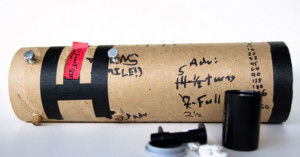
Mechanical engineer and Flickr user Some Guy (Art) was bored at his job where picture taking was explicitly disallowed, so he did what any rebellious photo-fanatic would do: build a makeshift camera out of trash! Bringing $5 worth of parts (e.g. dowels, bolts, super glue) from home, he successfully turned some machine core -- which he calls "cardboard toilet paper tube on steroids" -- into a 35mm pinhole camera.